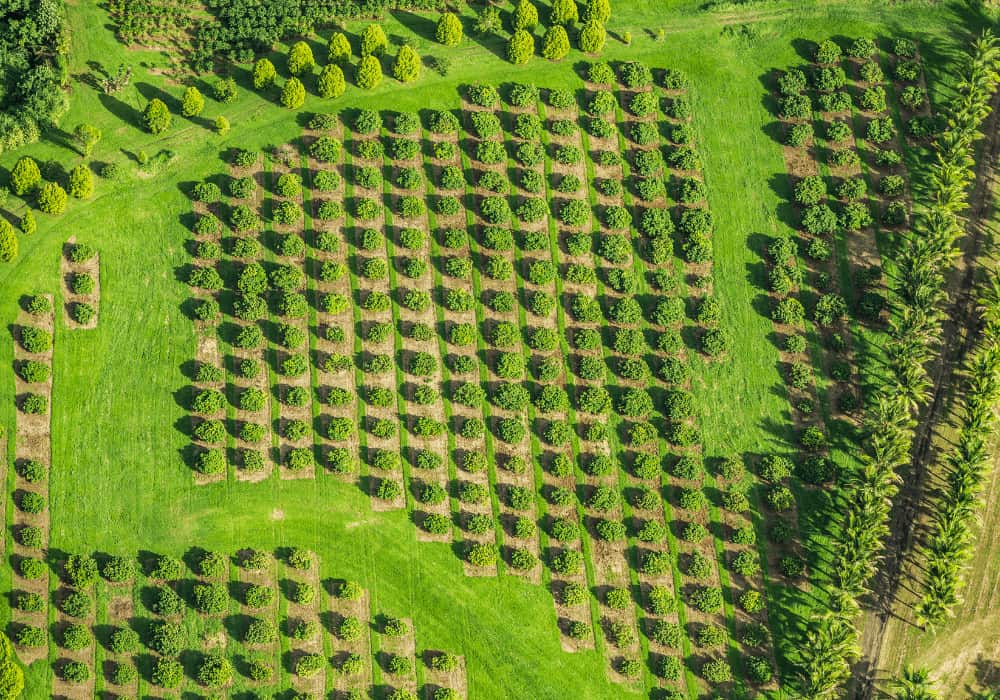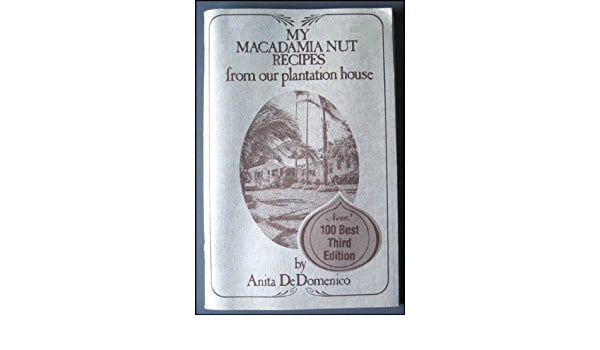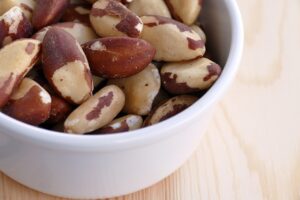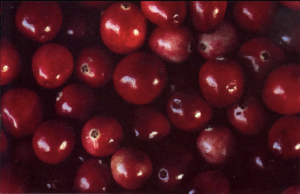Did you know that the macadamia nut tree is a self-pollinating plant? This means that another tree is not needed for its successful growth and production. Growers, however, still prefer the cross-pollination of closely planted orchards. Insects like bees can boost how well they produce in these spaces. This is especially helpful when the tree lives in a less-than-ideal location or temperature.
The Macadamia Nut Tree

When the nut is ready, they are not shaken from the tree like most other nuts. They fall to the ground all on their own. They are then swept up and taken to a processing plant. The husk is removed and finally, the in-shell nuts are dried.
The Hardest To Grow Of All Commercial Nuts
In order to crack the shell, the nut requires turning steel drums that provide three hundred pounds of intense pressure. The empty shells are reused as fuel for the furnace. That gives the freshest harvest of nuts their first round of drying. When the farmers ship macadamia nuts, they are shipped without their shells. This is due to the use of their shells with the farmer.
Breaking Down Nut Production
Removing the husks from one hundred pounds of Hawaiian macadamia nuts will leave you with fifty pounds of shelled nuts. If you then open and discard those shells, you have between twelve and a half to fifteen pounds of nuts. In other places where macadamias are grown, the yield is sometimes as low as seven pounds of kernels from one hundred pounds.
Hawaii is an ideal location for macadamias due to the lack of indigenous insect pests. These pests can require a lot of expensive control measures and wreak havoc on crops. In Hawaiian orchards, no pesticide spraying is needed.

That’s not to say Hawaiian orchards don’t have any issues. In the past decade, drought conditions have hurt the harvest and challenged scientists to find new solutions. Rick Vidgen, president of MacFarms and one of Hawaii’s leading growers says such a problem “makes us better farmers.” Adding that “people set to work developing better ways to maximize the available water, and develop cultivars that can handle the drier conditions”. Just like the nut he grows, Rick Vidgen is Australian. He is also chairman of the nutrition committee of the International Tree Nut Council.
Where Can You Find The Most Macadamia Nut Production?
Worldwide macadamia nut production is currently between thirty-five and forty million pounds. A relatively small amount in comparison to almonds or pecans. Australia produces about 45 percent of the world’s supply and Hawaii comes in second place with 35 Percent. There are also an increasing number of macadamia orchards in California. In recent years, orchard farmers establish their new fields in Kenya, Costa Rica, Guatemala, and other tropical countries. Mexico is growing macadamias on a smaller scale, but increasing the amounts of farms.
The Popularity of the Macadamia Nut
The Hawaiian macadamias have had some high-profile admirers. Julie Andrews and James Stewart were both early investors in the orchards there. Jim Nabors, who was TV’s Gomer Pyle, discovered early on, the beauty of Hawaii as well as its’ macadamia orchards. In the 1970s, Anita DeDomenico gave up a career as a ballerina to develop macadamia nut production farms in Hawaii. She eventually created the very first macadamia cookbook, boasting “It is the rarest and noblest of all nuts.”

The macadamia nut is not just rare when you compare it to other nuts. It also has a uniquely sweet taste and is rich in texture. As production continues to grow worldwide, so will the popularity of this nut. Also, all the different ways they can be enjoyed.




